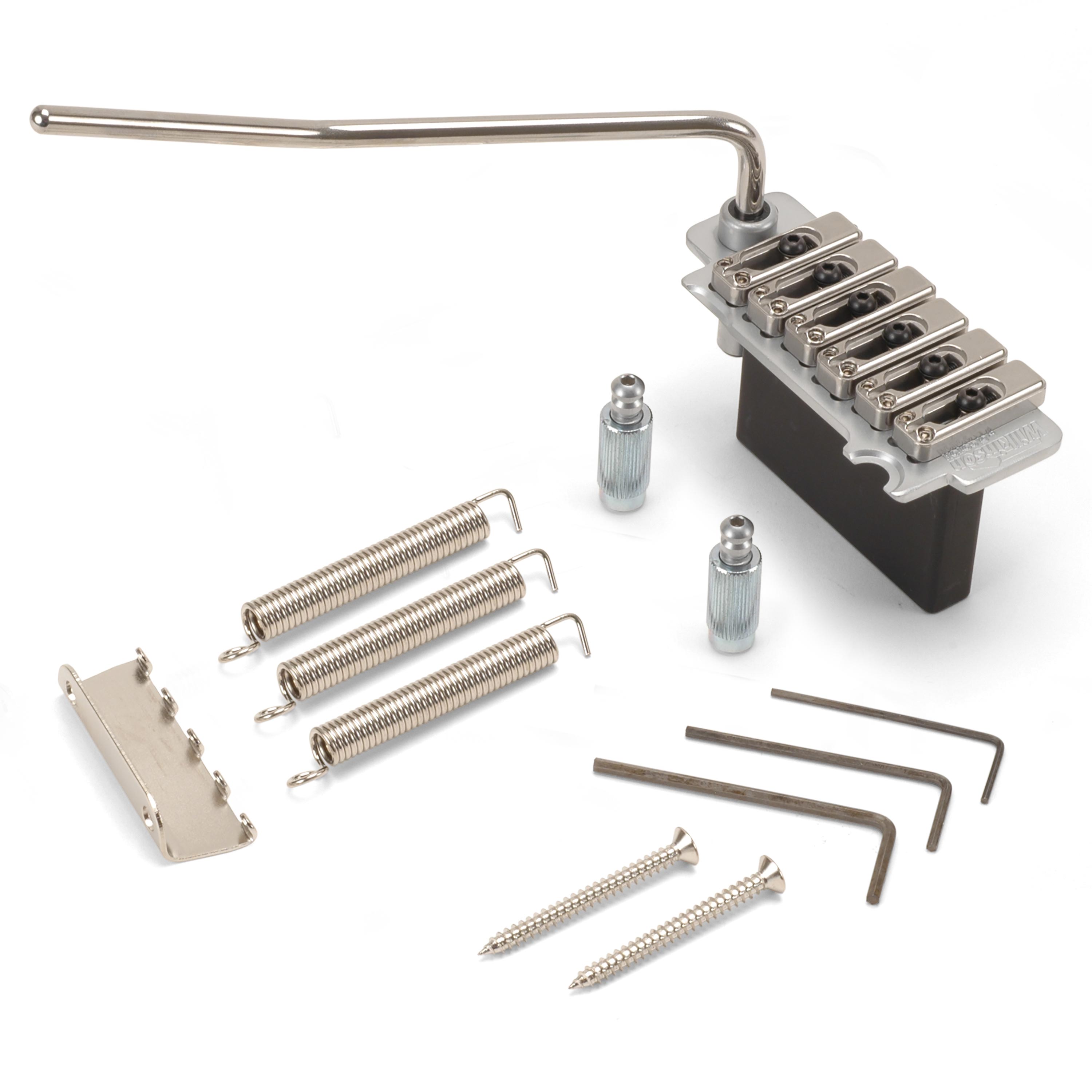Trevor Wilkinson's VS-100N Strat-Style Bridge
V-3533
Dan Erlewine sits down with renowned guitar designer and inventor Trevor Wilkinson to discuss his ideas for improvements to the classic Fender style bridge. His VS-100 bridge fits American Standard Strats and Strat Plus guitars without modification and addresses several challenges guitar players have faced for decades.
Video Transcription
Dan Erlewine: This VS-100N Tremolo was designed in England by Trevor Wilkinson. When Trev stopped by my shop, we got a chance to talk with him about how he came up with this improvement on a traditional tremolo. Here's what he said.
Trev Wilkinson interview: Wilkinson/Gotoh VS-100N tremolo
Trevor Wilkinson: I'm a guitar player, and I've going to add a caveat to that, I was a bad guitar player, but the one thing that I did learn was that when you were on stage, there was a lot more things to worry about than whether your guitar was going to work or not. I've always been a fan of the vibrato, tremolo or whatever you want to call it. I think it's a fabulous effect for a guitar, but we've all known about the problems with the fact that when you use it, the guitar has problems with tune instability.
Dan Erlewine: Amen.
Trevor Wilkinson: So it set me on a mission to say, okay, why are the problems there? And several people have tried to solve several of the problems and they've all done it well, but it was, how can I make the life simpler for a guitar player? He wants to be in tune. He doesn't have to worry about it. And that just set me on a quest, which I guess I'm still on. The bridge that's probably most well known is what we call the VS-100, which is what this is here. We've known for a long time that a six screw bridge could have problems, but the two pivot we've always known has got what we call a great return to zero. The fulcrum of this bridge is very, very hard to beat. You can try bearings, you can try rods, you can try all kinds of things, but this is a very, very simple thing.
Two pivot posts, two knife edges. The reason I did the knife edges to this shape is the fact that this one here will locate the bridge from a sideways movement. And this one being a straight line is the least friction you can possibly get. So consequently, this is the least friction you will ever get on a fulcrum vibrato. It's all about the return to zero. It's when you've used the bar, does the bridge come back to zero? If you pull up, if you push down, whatever you do, this bridge has to return to zero to give the even chance of staying in tune.
Dan Erlewine: Why the set screw on the saddles? I always thought that was to lock it in once you got the intonation right.
Trevor Wilkinson: You're quite right. Yes. It will lock the intonation because you've got an intonation screw here, which you can do the intonation with, and then you can lock it down there. I became aware of the fact that on a standard, we'll call this a standard vintage style vibrato bridge with the saddles that are on springs and things, they move around. So I'm a great believer that we don't ask the string to do anything but sustain, vibrate, ring, transmit energy to the guitar body. Anything that moves underneath the string, the string is trying to stop from moving. Keep still. I believe that robs it of energy. So therefore this sometimes misused or overused word of sustain that we use. Sustain cannot come from anything, but the string itself, it can't come from a [inaudible 00:4:22] backup, it can't come from anything but the string having the length of time to ring is all about coupling.
So if you just do the simple thing of locking the saddle in place, you are now not asking the string to do that for you. The string itself can just sit on that saddle, happily vibrating all day long.
Dan Erlewine: Excellent.
Trevor Wilkinson: And that was really why that came about. I've always used stainless steel for arms because pulling plating on arms creates a problem because you can't always control the thickness of the plating. So stainless steel arms, this simply just goes in this arm color and it's a push fit, but we've added a screw underneath here, which basically says, okay, you've got a thread in the arm there. This will now go in and you can start to thread it onto that screw. Now this gives you infinite adjustability of the height of the arm, which is very, very important to the leverage and the way it feels.
Some people like it high. Some people like it low. It does two things. It gives you the opportunity to adjust the arm up and down. And it also stops the arm from falling out. And then of course, you've got the guy that wants the arm to fall away, or you've got the guy that wants the arm to stay wherever he puts it. So we introduce this little screw here at the back of the arm collar and with a simple turn of that, you can actually crush that del-a-lum bushing in there. And you can make that arm as stiff or as loose as you want. And you address that problem of if you are trying to use a vibrato subtly and the arm's going clunk down, clunk up, you can't get that subtle sweet vibrato, which is what I believe vibrato bridges are all about.
Dan Erlewine: It's old school. I'm the same way.

